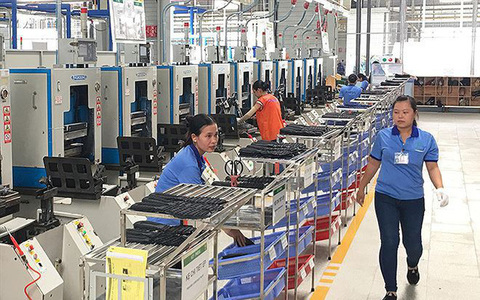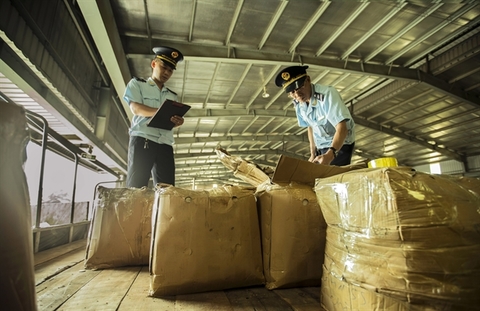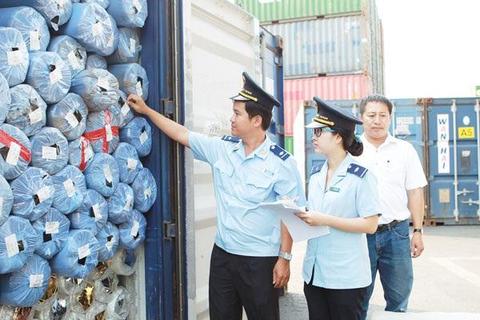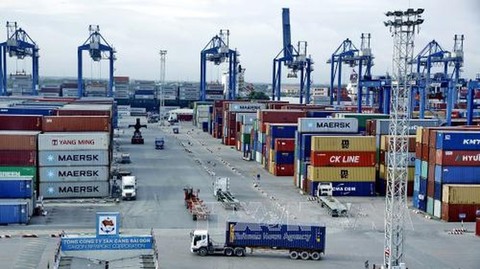Seizing e-trade for smaller firms
Seizing e-trade for smaller firms
E-commerce growth in Vietnam is moving from strength to strength, with immense potential currently available to both small- and medium-sized businesses. With regulation changes at a global level being touted, Dr. Deborah Elms, executive director of the Asian Trade Centre, shows how groups can capitalise on the ongoing revolution, and maximise benefits for smaller enterprises.
Trade has never been easy for small companies. They are hampered by a lack of people, knowledge, time, and resources. Impediments that seem insignificant for larger companies can wreck a small one. A day’s delay at the border, for instance, can be enough to push a company out of business entirely.
Many will say that the businesses involved should have had a better cushion to absorb such a delay, and those people have clearly never run a small firm. Funds are typically lumpy, with cash flow a constant challenge. If the border delay hits at the wrong moment or with the wrong customer or order, it can literally be the end of the line.
E-commerce and digital trade have dramatically altered the markets available to smaller firms. As we have often noted, companies now have the promise of becoming a “micro-multinational,” able to find customers for goods and services anywhere in the globe at the click of a button.
Increasingly, however, the promise is being eroded by various barriers being erected by governments. In a supreme piece of irony, many of these obstacles are being imposed in the name of helping level the playing field for small firms.
For example, new laws and regulations are making it harder to ship small-d, low-value goods across borders. When sending items to Europe, for example, companies are going to need a responsible person located inside the continent. This adds complexity and costs for micro, small, and medium enterprises (MSMEs) outside of Europe. Companies will need to have someone on standby, on the possibility that a customer inside Europe will buy a product.
The imposition of rules on data flows, like Europe’s General Data Protection Regulation system, can also be extremely challenging and costly for firms. While it does not currently apply to very small firms, it does not take much to get captured by the regulation, with companies employing more than 50 people required to comply. Again, smaller firms outside of Europe are stuck spending money on a system that may not even apply to their typical customers, just in case.
As other countries and regions develop their own rules on data flows or privacy rules or requirements on data hosting and so forth, companies will get stuck creating different sets of compliance frameworks. Alternatively, firms will simply be operating outside the law in different jurisdictions and run the risk of getting caught, often by rules they did not even know existed.
Increasingly, governments are looking to impose a wide variety of taxes on goods and services coming across borders. This also adds to the burden on smaller firms that need to comply with tax systems in foreign countries and in foreign languages.
The list of obstacles could go on. However, the World Trade Organization (WTO) has launched talks in Geneva to begin to create global rules to solve some of these issues. For smaller firms, global rules can at least ensure that added expense and time becomes a necessary part of doing business, rather than an irritating element of doing business with some countries.
The of the prize is huge. Estimates are all over the place on the current of the digital economy, but Asia tends to lead the way. An extremely useful series of reports just released by the Hinrich Foundation on eight economies in the region including Vietnam, China, Indonesia, Malaysia, and Australia, shows how much additional trade might be gained from eliminating barriers to digital trade.
For Vietnam, as an example, the economic value of digital trade-enabled benefits is estimated to be worth VND 81 trillion ($3.5 billion) but this could grow by 12-fold under the right settings by 2030.
Indonesia, currently home to some of the most innovative unicorns in Asia, could grow 18-fold under the same time frame.
Some of the required policy adjustments in places like Vietnam and Indonesia are domestic. Changes that would benefit smaller firms are not, strictly speaking, digital at all. Improving trade facilitation for smaller-, low-value shipments would dramatically improve trade prospects for e-commerce companies.
But rule changes at the global level in the WTO would also help lock the trade gains noted in the Hinrich Foundation reports.
Not all WTO member states are included in the current negotiations in Geneva. Only 76 of the 164 members are signed up to participate, which is a missed opportunity. As the WTO’s director general Roberto Azevedo noted recently, countries have only two options: to participate and help make the rules, or refuse to participate and take the rules as given.
The obstacles to joining are many. Countries involved in the United Nations Conference on Trade and Development’s (UNCTAD) e-commerce week offered a long list of issues of concern. These included big gaps in the ability to participate in digital trade and e-commerce given infrastructure issues; worries over data privacy; issues with the dominance of tech companies; and fears over how such companies treat firms and consumers from the developing world.
The WTO cannot and will not solve all of these issues. It is a trade organisation and will need to stay focussed on the trade aspects of e-commerce and the digital economy, while relying on others, like UNCTAD, to manage many of the crucially important developmental dimensions.
The launch of talks in Geneva, however, has given renewed hope to smaller firms that, at some point in the future, some of the challenges attached to trading globally will be minimised. Trade will never be easy for MSMEs. But it can certainly be made less complicated than it is today.


















